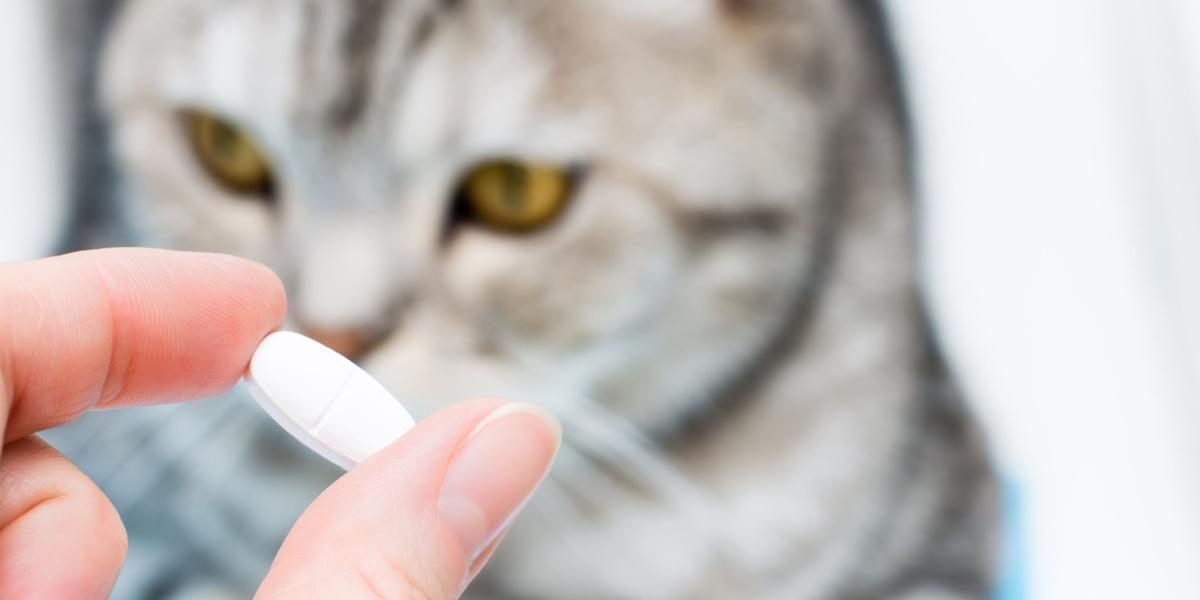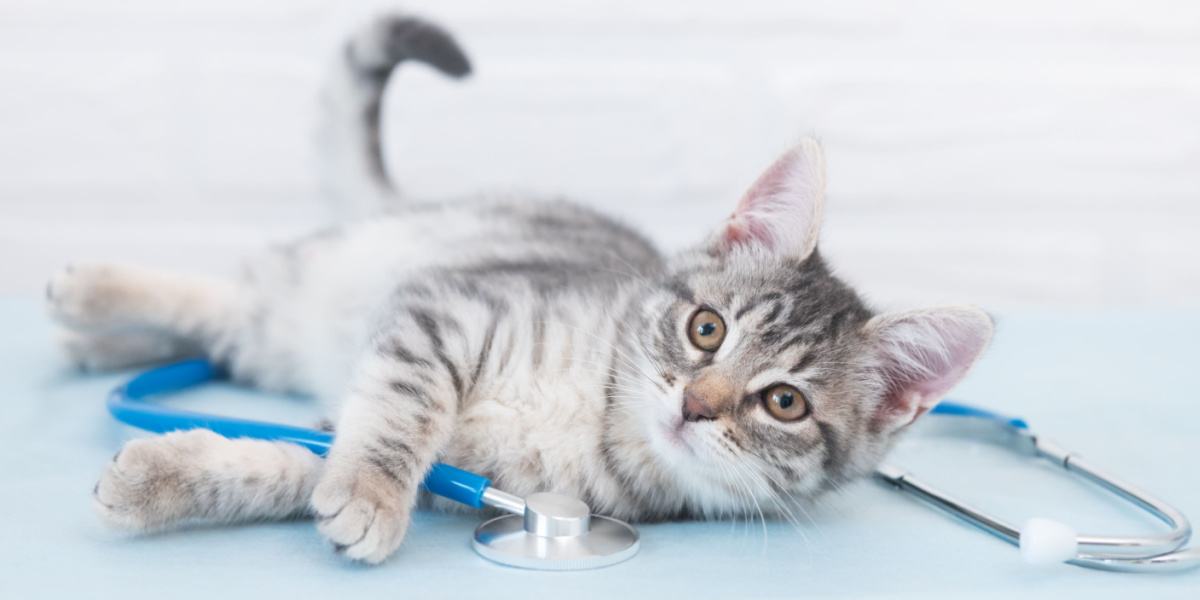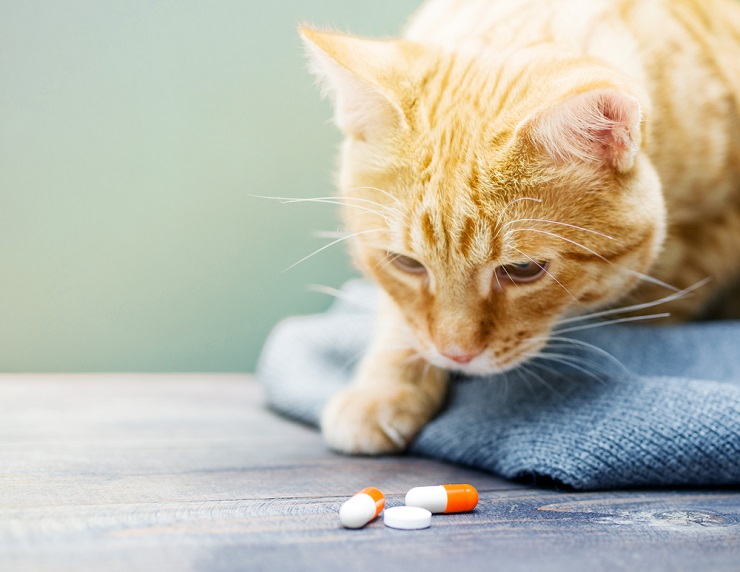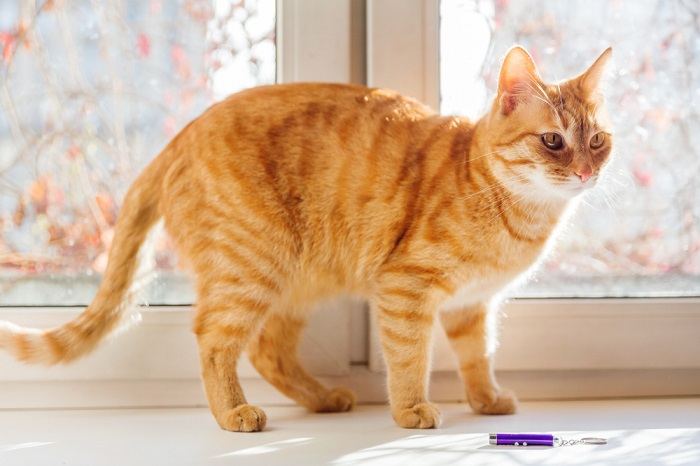It’s a very typical scenario for every cat parent. You think your kitty may have an infection and you’ve got some leftover amoxicillin your own doctor prescribed you sitting in your medicine cabinet. You find yourself wondering, “can you give cats human antibiotics?”
If it works, it might save a stressful and costly vet appointment. But you’re not sure if it’s safe to do. In this article we’ll discuss how antibiotics are chosen, common human antibiotics used for cats, and the potential consequences of inappropriately using a human antibiotic on a cat.
There are many factors that veterinarians consider when they prescribe an antibiotic to a cat, making proper treatment for cats with antibiotics best left up to the vet. While some human antibiotics have "off-brand" use that may be used to treat certain conditions in cats, such treatment is still best utilized under the guidance of a veterinarian. Due to the size and metabolic differences between humans and cats, a dose of antibiotics for a human is vastly different from a safe and therapeutic dose for a cat.Key Takeaways
About Antibiotics for Cats: How They Work
Prescribing the correct antibiotic to your cat can be tricky and is best left to the discretion of a veterinarian.
Before we can answer if it’s okay to give cats human antibiotics, it’s very important to understand what antibiotics do and how they work. It’s also important to understand how and why vets choose particular ones.
Generally, antibiotics only kill bacteria. They do not kill viruses or fungal organisms.
When killing bacteria, antibiotics use one of two general mechanisms: they either kill bacteria based on a certain dosage concentration or kill them based on how long they are present in the body.
Antibiotics all have different mechanisms that they use to kill bacteria. Some bacteria may not be affected by certain antibiotics.
Antibiotics also have to be absorbed by the body and reach the location where bacteria are causing an infection. However, there are some parts of the body that are resistant to antibiotic penetration.
When vets choose antibiotics, all of these factors are considered. There are certain types of bacteria more likely to inhabit parts of the body like the urinary tract, mouth, or respiratory tract. For example, if your cat has a confirmed urinary tract infection, your vet will know what types of antibiotics will work best to penetrate the bladder and reach good concentrations in the urine.
Many bacteria also have the ability to adapt and change themselves to become resistant to an antibiotic’s effects. This is the reason why an antibiotic may not work. In these cases, the vet may obtain a bacterial culture sample to verify what type of bacteria is present. This then indicates which antibiotic will work best against it.
Also Read: Bacterial Infections in Cats: Causes, Symptoms, & Treatment
What Do Antibiotics Do for Cats?
While antibiotics may be necessary if your cat has a bacterial infection, they may not be the appropriate treatment for whatever ailment your cat has.
With few exceptions, antibiotics only kill bacteria, which means they are inappropriate to use in other cases of illness. This is especially true of viral infections, which are very common in cats and may exhibit signs similar to a bacterial infection.
It can be very difficult to know if your cat has an actual bacterial infection just by observing your kitty at home. There are many signs and symptoms that can be associated with bacterial infection but can also be associated with other types of infections or noninfectious causes.
Fevers are great examples. A fever is a nonspecific finding and can have numerous underlying causes, not just related to bacterial infection. Fevers can be seen with viral infections, injury, or inflammation anywhere in the body. Antibiotics may not be appropriate to use for many of these causes.
Many folks may also incorrectly assume their cat has a fever just based on signs of lethargy, a poor appetite, hiding behavior, and the cat feeling “warm.”
Another great example is a cat suddenly showing signs of frequent urination, straining, and poor use of the litter box. Many folks may immediately then believe their cat has a urinary tract infection (UTI). But cats can show signs of inappropriate urination due to behavioral causes like stress, territorial marking behavior, sterile/noninfectious bladder inflammation, urinary crystals, and bladder stones.
If an antibiotic is used in any case other than a UTI, the cat’s actual illness not be treated, allowing it to worsen. Needlessly using an antibiotic can also lead to an increased risk of resistance and won’t work for an actual infection in the future.
For an antibiotic to be used, there must be a clear diagnosis of the condition being treated. There needs to be at least a high suspicion of the condition based on the evidence present. Collecting evidence and making sense of it whether an antibiotic is indicated should be left to a veterinarian’s discretion.
Also Read: How To Stop a Cat From Peeing on the Carpet
What Types of Human Antibiotics Are Safe for Cats?
Using an antibiotic inappropriately for your cat may lead to unwanted side effects.
Any medication can have the potential for unwanted side effects. These include vomiting, diarrhea, and others. This can happen even when an antibiotic that is FDA-approved for use in cats is used for treatment.
There are antibiotics that are not FDA-approved and are used in an off-label manner. These can still be used safely by veterinarians at doses that have been studied.
The risk of side effects is much higher if the antibiotic being used is not indicated at all for use in cats.
It’s very important to understand that there are antibiotics used in people that are not used in cats, just as there are cat medications that are not used for people. Most often this is related to differences in how cats and people metabolize and eliminate certain drugs from their bodies.
A great example is the fluoroquinolone class of antibiotics. Pradofloxacin (Veraflox) is FDA-approved for use in cats. A close cousin, marbofloxacin (Zeniquin), can be used off-label for treating cats. Neither of these has any human generic versions and is only used in veterinary medicine.
Conversely, ciprofloxacin, also a fluoroquinolone, is a broad-spectrum antibiotic prescribed for people. Generally, ciprofloxacin is not prescribed for cats because they don’t metabolize it well and it is far less effective compared to its similar compatriots.
Using an inappropriate antibiotic can lead to bad side effects and even toxic effects if the cat cannot properly metabolize and eliminate the medication. Even if adverse effects do not occur, using the wrong antibiotic for an infection may allow the infection to persist or worsen. It will also contribute to antibiotic resistance.
Also Read: 15 Human Foods That Are Poisonous & Toxic To Cats
What Are Safe Human Antibiotic Dosages for Cats?
The dosing difference of similar antibiotics between humans and cats can be vast due to size and metabolic differences.
Antibiotics come in various dosage sizes, typically expressed as milligrams. In pets, the dosage can vary quite a lot. Doses are typically calculated based on the cat’s weight in kilograms.
Cats are, obviously, significantly smaller than people. A dose of an antibiotic you have at home is far too high for your kitty to take. Just giving, say, 500mg of amoxicillin, a single dose you might take, is several times the dosage amount needed for a typical 10-pound cat. This will, instead, likely induce unwanted side effects, especially digestive upset.
The dosage size of an antibiotic is also not necessarily uniform between different indications for its use. A dose for a respiratory infection may vary from a dose for a UTI or skin infection.
But it’s not just dosage size that matters. The dosing schedule frequency also changes depending on the indication. Some antibiotics themselves are only dosed once a day, while others are given twice a day.
But even between indications for use, the dosage frequency between giving every 24, 12, or 8 hours may be different. If you give just a single dose once a day for a condition that requires it to be given three times a day, you won’t be treating the infection properly. In fact, you would be contributing to antibiotic resistance.
The only dose of a human antibiotic that’s safe to use for your cat is one that your veterinarian prescribes.
Also Read: How To Give Subcutaneous Fluids To A Cat?
Conclusion
To keep your cat both happy and healthy, always consult your veterinarian before giving your cat antibiotics.
While there are some human antibiotics that are safe to give to cats, you should never give your kitty an antibiotic that was prescribed for you by your own physician. It may not be the correct type of antibiotic, the instructions may differ, and the dose is likely to be much higher than what is safe for your cat to take.
If you are concerned that your cat has an infection, have your cat examined by your veterinarian. Defer to your vet’s knowledge on what antibiotic choice is most appropriate depending on your cat’s situation.
It may be possible to have your cat’s prescription called into your regular pharmacy. However, this is only possible if there is a generic human equivalent and the dosing matches. It is important to keep in mind that some antibiotics used in veterinary medicine are not used in humans. These will only be available from your vet’s office.
Also Read: Amoxicillin for Cats: Dosage, Safety & Side Effects
Frequently Asked Questions
Can I use human amoxicillin for my cat?
Human amoxicillin can be used in cats, but only if prescribed at the correct dosage and frequency by your veterinarian. You should not give your cat your own amoxicillin that was prescribed to you. The dosage is likely inappropriate and the label instructions will be different than what your cat may need.
Which antibiotics are safe for cats?
There are several antibiotics that are safe for cats, including amoxicillin, amoxicillin-clavulanate, clindamycin, cephalexin, and trimethoprim sulfa. However, they are only safe to use when the proper dose is given at the right frequency, and for the correct condition. Making these decisions is the responsibility of your cat’s veterinarian.
Can I give my cat 500mg of amoxicillin?
No, you should not give your cat 500mg of amoxicillin. Besides being much too high a dose and more likely to just lead to unwanted side effects, this may not be the correct antibiotic for the infection your cat has. Your cat may also not have a bacterial infection or need antibiotics at all. Your veterinarian should be the one to determine what type of illness your cat has and if antibiotics are needed.
How much amoxicillin do you give a cat?
The answer is the dose that your veterinarian prescribes for your cat. If your cat has not been prescribed amoxicillin by a veterinarian for a bacterial infection, then it should not be given.












